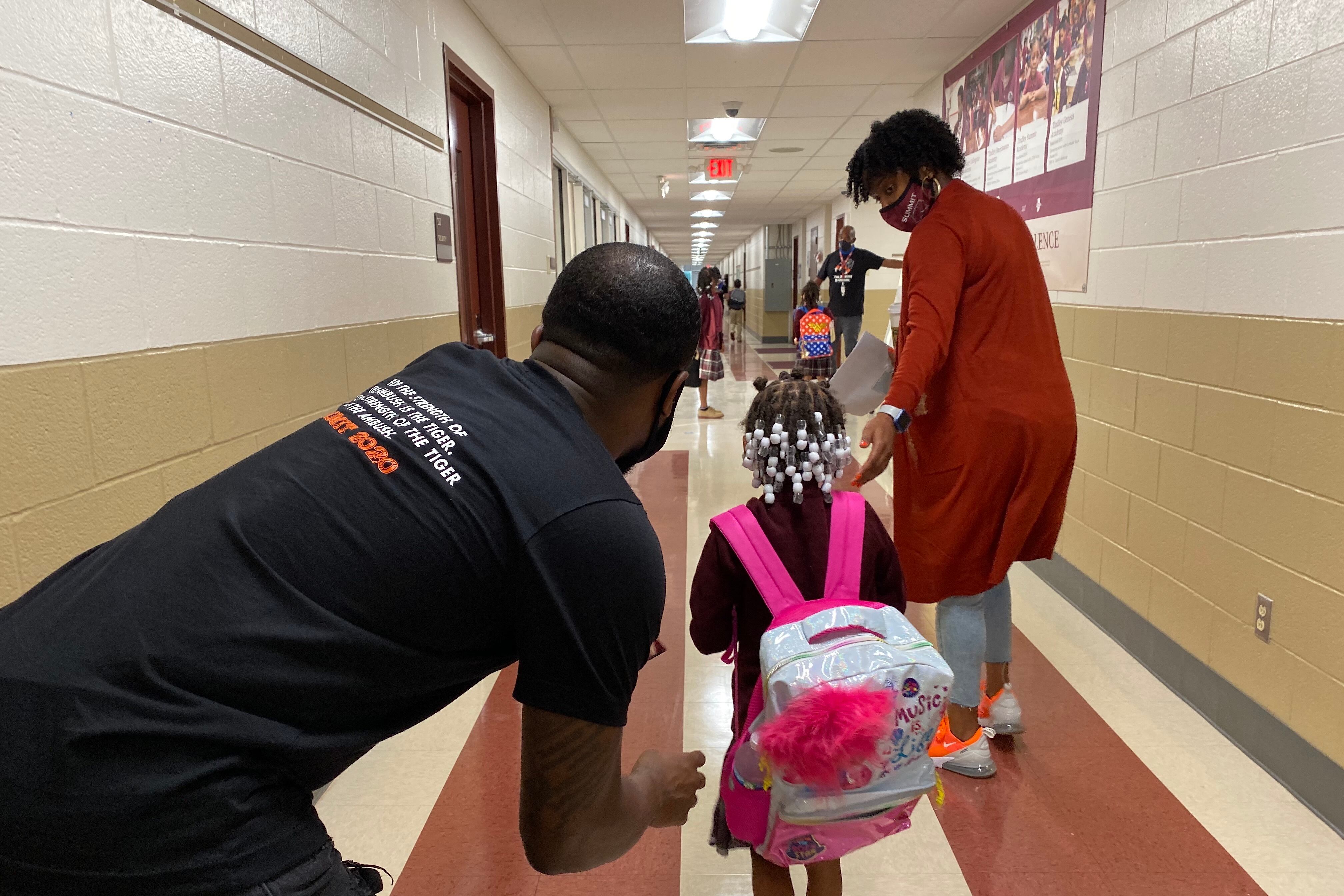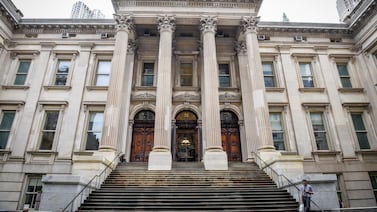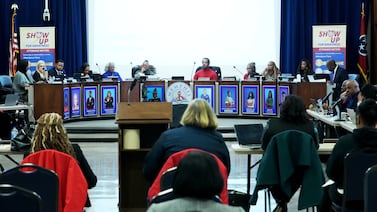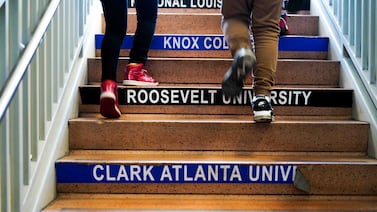Some states and charter networks have struggled in recent years to spend money provided by the federal government to help start charter schools, according to new data collected by Chalkbeat, much of which has not been previously reported.
KIPP, for instance, won an $88 million grant from the feds in 2019, but has spent less than $20 million of it to date. IDEA charter network has used just $17 million of two grants totaling nearly $200 million. Colorado has only spent half of its $55 million award from 2018. In 2019, the U.S. Department of Education had to redirect $12 million from the program because of “limited demand” from states and would-be charter leaders.
The federal Charter Schools Program, funded at $440 million this year, has drawn substantial attention in recent months after the Biden administration proposed new regulations, which charter school advocates have decried as likely to stifle charter growth.
The new data suggests that the charter sector was experiencing growing pains even before the proposed rules, likely due to COVID-era complications as well as population shifts and political obstacles in certain cities and states. It’s not clear if this is a temporary pandemic blip or a reflection of longer term challenges.
The problem is that in some places “there aren’t enough new charter schools every year,” said Alex Medler, executive director of Colorado Association of Charter School Authorizers. “It could be that new school start ups will pick back up.”
Some places struggle to spend charter start-up funds during pandemic
The Charter Schools Program is a long-running initiative that helps pay for the start-up costs of new charters. Most commonly, states or state-based charter groups win five-year “expected” grants that they then distribute to people in their state who want to launch or grow a charter school. Charter networks and individual charter schools can also receive federal funding directly.
The amount of actual funding can be adjusted upward or downward each year and grantees can seek extensions if they’re having trouble spending the money.
Between 2018 and 2020, organizations from 19 states won grants ranging from $10 million to $100 million. Several charter networks also won grants, including large awards for KIPP and IDEA.
Data on how much of that funding has actually been distributed is not readily available, but Chalkbeat obtained it from many individual grant winners.
Several — including grantees in Alabama, Arizona, Florida, Idaho, Nevada, North Carolina, and Washington — said they’ve had no problem issuing subgrants to start-up charter schools.
“We’ve had demand for these dollars,” said Terry Ryan, CEO of Bluum, an Idaho group that won a CSP grant. “We can’t build buildings fast enough.” The U.S. Department of Education upped the grant to $22 million from $18 million initially; most of the money has been awarded, and Ryan expects the rest to go out shortly.
Arizona has already awarded $40 million of its $55 million award. “The Department is on track to meet its goal of awarding funds to forty schools … over the five-year grant period and has not experienced challenges with prospective schools,” a spokesperson said.
But a number of other places haven’t been able to issue grants as intended.
“We have run into challenges with spending down this money,” said Dana Smith, a spokesperson for the Colorado Department of Education. She said applications have been lower than expected due to the pandemic, which means the state is projecting to spend $13.6 million less than initially anticipated.
Washington D.C. has issued just one grant — for $1.5 million to a single school — of its $24.2 million award. A spokesperson pointed to the fact that the city’s charter board has said it will not approve new schools until 2023.
Michigan has spent about half of its $47 million award from 2018, providing 20 grants to planned charters, significantly short of its goal of 34. “After two pandemic years it appears that it may be a challenge to meet the original number in the grant,” said Martin Ackley, a spokesperson for the state department of education.
In New York, spending challenges have existed for some time. The state won $86 million in 2018 — even though reviewers worried about the fact that it had still not spent a prior award from 2011.
The state received a waiver to use some of the dollars to help existing charter schools address COVID needs rather than to start new schools, the original purpose of the grant. But New York still has over $20 million remaining from its most recent grant.
“The number of newly authorized charter schools across all New York State charter authorizers has slowed in the past few years,” said a spokesperson for the state education department. “This has an impact on the number and pace of awards under this grant program.” New York City, where most charter schools in the state are located, has reached a cap of charters.
Perhaps the most striking disconnect between original awards and spend down to date come from KIPP and IDEA, two of the country’s largest charter networks.
Since 2010, IDEA has won six grants totaling nearly $300 million, helping it grow at a rapid clip. But it has spent only a small part of its two most recent, and largest, grants from 2019 and 2020. In its applications, the network said it would grow or start 200 schools with the two awards.
That hasn’t happened.
“IDEA scaled back our growth plan significantly beginning with the 2021-22 school year, in large part because we chose not to add the strain of planning, constructing and opening new schools while we were also trying to operate our existing schools during the pandemic,” said Lynnette Montemayor, a spokesperson for IDEA.
The network has also gone through leadership turmoil with both its founders departing in recent years.
“It’s hard to say at this point what percentage of funds will have been spent by the time all our CSP grants sunset,” Montemayor said. “We are in discussions with the Department about our amended funding needs.”
Meanwhile, KIPP had initially said it would open or expand 52 schools by 2022. A reviewer noted that this “massive expansion” was “very ambitious,” but the network won an $88 million award anyway in 2019.
To date, the network has only used 20% of those funds, and now says it will open 38 schools by the end of this year. “We have not been able to spend this grant as expected due to the COVID-19 pandemic,” said KIPP foundation spokesperson Maria Alcón-Heraux. “Our KIPP Regions have had to reevaluate their growth strategies and reprioritize or delay the opening of new schools.”
Alcón-Heraux pointed to staffing needs created by the cascade of pandemic challenges. “With a limited staff to handle the onslaught of new responsibilities, our teams had to pause on growth plans until our schools reached a level of normalcy,” she said.
KIPP has asked the U.S. Department of Education for an extension to use the money and is still aiming to use all the funds from its initial award, Alcón-Heraux said.
Political headwinds, COVID add challenges for new charters
The CSP spending challenges could reflect many factors: pandemic-era challenges, political hurdles, parental demand, or overly ambitious plans.
Charter schools had been facing new political challenges leading up to the pandemic. Blue states passed laws limiting growth or declined to lift caps on charter schools. Several cities became less hospitable to charters. Perhaps reflecting those challenges, the number of new charter schools dropped sharply in 2016 and 2017, but bounced back in 2018 and 2019.
Although data is limited, Medler, who has been involved in CSP for years, says that the spending challenges pre-dated the pandemic.
During the pandemic, charter school enrollment has spiked, although much of that came from existing virtual charter schools.
The new data from CSP suggests that some of the political obstacles before the pandemic remain, and that some charter schools faced new pandemic-created challenges. Population shifts away from certain places may also be having an effect.
The charter sector could face yet another hurdle soon. The Biden administration has proposed a slew of new CSP requirements including a detailed “community impact analysis.”
The rules have not been finalized yet, but if they are, they could make it even more difficult to spend the money, by barring for-profit companies and perhaps deterring others from applying. It’s also possible that the shortage will mean that the rules won’t end up making a big difference in who gets a grant, since the grant competitions will be less competitive.
“Moving forward, we do not anticipate less demand for this program,” said Luke Jackson, a U.S. Department of Education spokesperson. “As we evaluate public comments on our proposal, we are hopeful that we will have a charter school program that encourages quality, accountability, and integrity in charter schools across the country.
To charter critic Carol Burris of the Network for Public Education, all of this is more evidence that the program is poorly managed. “There is always this disconnect between reality and need,” she said. “Regardless of what happens with the regulations, there is a real issue with states applying for the amounts that are more than they need.”
But Nina Rees, president of the National Alliance for Public Charter Schools, said that particular spending challenges may reflect unique issues of each grantee, like IDEA’s leadership turnover.
Only certain places get CSP funding each year, she said, “but that doesn’t mean that there’s no growth in other parts of the country, and that there’s no need for more support to grow charter schools.”
Rees says there should be more flexibility to move dollars among different parts of the CSP and more money for the program generally. The National Alliance is currently pushing to increase funding for the CSP from $440 million to $500 million to back continued charter growth.
This story has been updated to include additional context on KIPP’s CSP grant, including how many schools the network plans to open by the end of this year.
Matt Barnum is a national reporter covering education policy, politics, and research. Contact him at mbarnum@chalkbeat.org.






